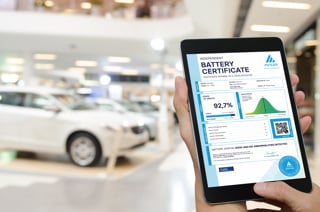Tackling current automotive market challenges to nurture a loyal customer base is the key to success in a cost of living crisis, says Feefo chief customer officer Kim Burgess.
In this exclusive 'guest opinion' post for AM she spells out the value of excelling at customer experience (CX) when time get tough.
Due to ongoing chip shortages, sales on new cars this year are set to drop by 2.8% compared to 2021.
At the same time, used car sales have dropped by nearly a fifth and 31% of people say shortages will affect their plans to buy a car this year.
However, there is hope, with figures showing an 8.6% rise in car production during July.
Autumn is an important time in the motoring calendar, thanks to fresh number plates. With people wanting to buy the latest models, car manufacturers and dealers must ensure that the customer experience remains positive, while supply is lower than usual.
So how do you keep customers happy and maintain loyalty while there is a squeeze in supplies?
Motor ahead by prioritising the customer experience
Customer experience (CX) is crucial for all businesses. If a customer has a great experience, they’ll be more likely to buy more, tell friends about your product or service and return time and time again.
While engineering quality is still hugely important, customers are demanding more from their experience.
People will pay more if your business offers a great service. Companies can charge up to a 16% price premium on products if they are offering exceptional CX, and 54% of customers are ready to buy a car from a dealer who offers the best experience, regardless of price.
To improve CX, businesses should consider their customer journey. There are multiple touchpoints in the customer journey when buying a car – from looking at cars on the website, visiting the dealership, test driving through to the delivery of the product.
Many don’t want to visit a showroom, with 60% of under 45s interested in a contactless, online service when buying a car. Car manufacturers and sellers must listen to the customer adapt their CX to suit changing customer needs.
This is especially important in the current landscape, where disrupter car manufacturers such as Tesla are entering the ring.
Tesla prioritises the customer experience and sells direct to its customers. Their customers can buy a car online with fewer than ten clicks from a simplified range of just a few models, with a set price for all.
Traditional car dealerships can follow suit and make both their digital and in-person experience as slick as possible to give them a competitive advantage.
The importance of customer retention during tough times
The UK is currently facing a cost-of-living crisis, so there’s potentially less money to spend on high price items such as new cars.
Businesses that nurture and maintain customer loyalty will be best placed to weather this storm.
Customer loyalty can boost profits because existing customers have already invested in your brand and understand the products and services on offer, making them much more likely to buy from you again, especially if you provided a great experience the first time. In fact, increasing your loyal customer base by just 5% can boost revenue by 25% to 95%.
There are numerous ways your automotive business can increase customer loyalty. For example, customers are 86% more likely to buy a car from you if they regularly service their car with you, so offer service incentives that ensure customers use your dealership when servicing their car.
Another way is to collect feedback from customers after they have used your service in the form of reviews. Nearly 80% of consumers say reviews are important and 41% say they will read at least five reviews before visiting a dealership, so feedback is important to both your business and to your customers.
Reviews offer insights into a businesses’ customers and their needs and allows them to make improvements to keep customers loyal. For example, Kia used Feefo reviews to gather insights from their customers and used these to improve their own products such as their electrical vehicle range. By listening to customers, Kia has been able to have an honest and open relationship with their customers.
Effectively handling feedback
While it’s great to receive positive reviews, there’s no doubt that sometimes reviews can be negative. Although negative feedback or complaints can be disheartening, they do help your business understand weaknesses.
Customers' perception of your brand will often improve as a result of you responding correctly and solving the problem. Maintain a professional tone when responding and look for and emphasise any positive aspects of the situation. Even if you are unable to resolve the issue, good communication will ensure that the customer is satisfied.
Businesses and industries will frequently face challenging times, but there are always solutions. Your business should be able to retain customers even when times are tough by collecting feedback, listening to the customer, and prioritising their needs.
Ultimately, purchasing a car, whether second hand or new, is a significant life event for many. Car dealerships and manufacturers must ensure they amplify that new car feeling by listening and responding to customers
Author: Kim Burgess, chief customer officer at Feefo





















Login to comment
Comments
No comments have been made yet.